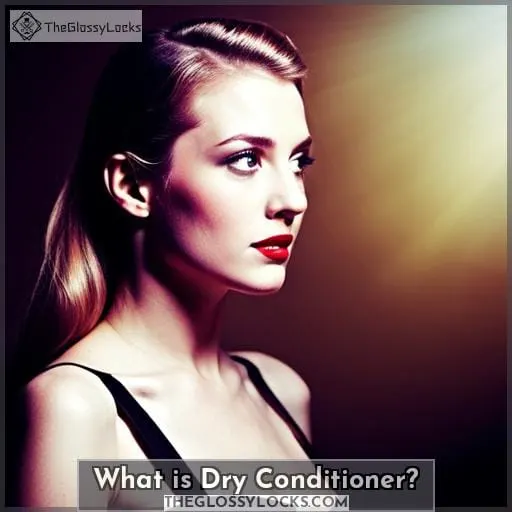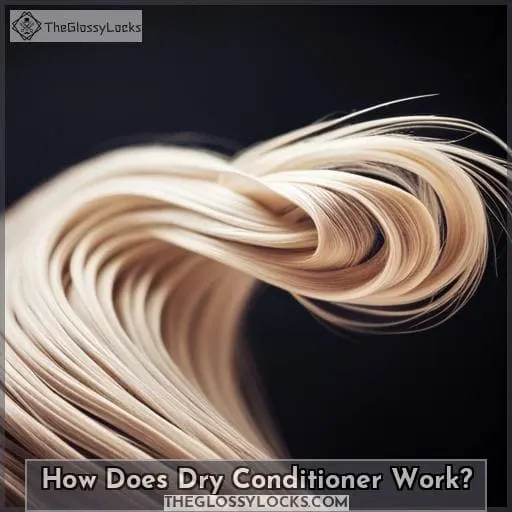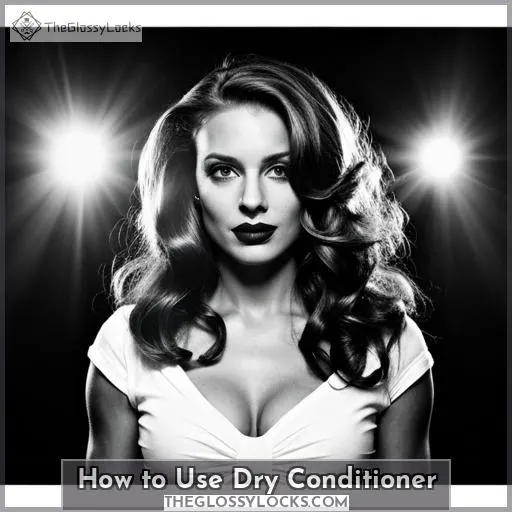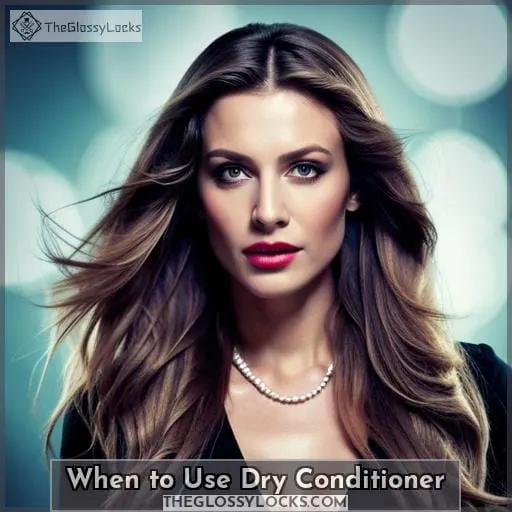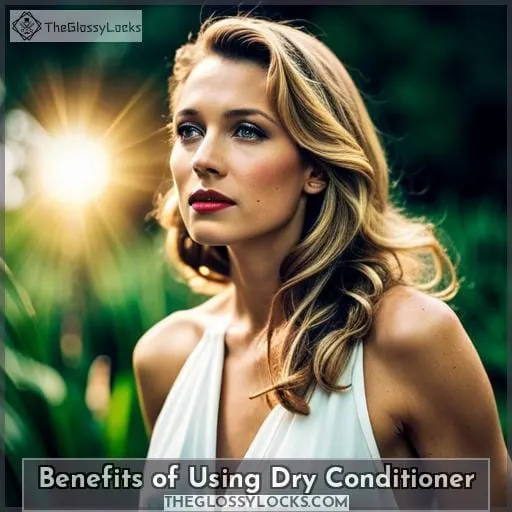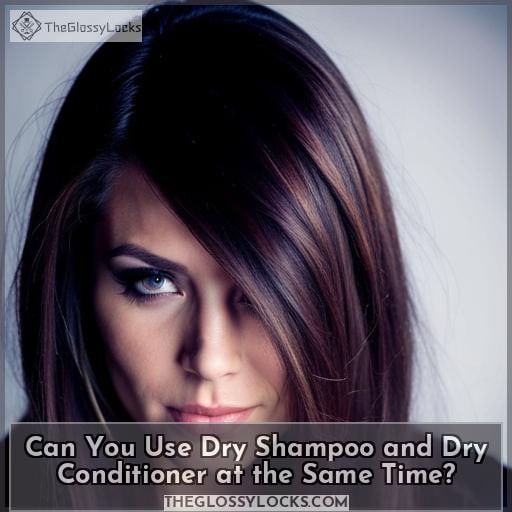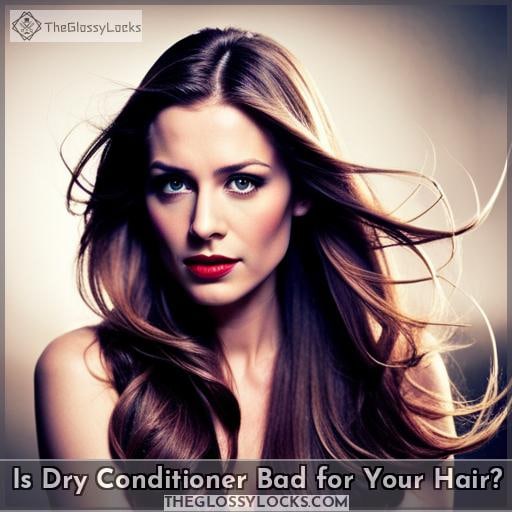This site is supported by our readers. We may earn a commission, at no cost to you, if you purchase through links.
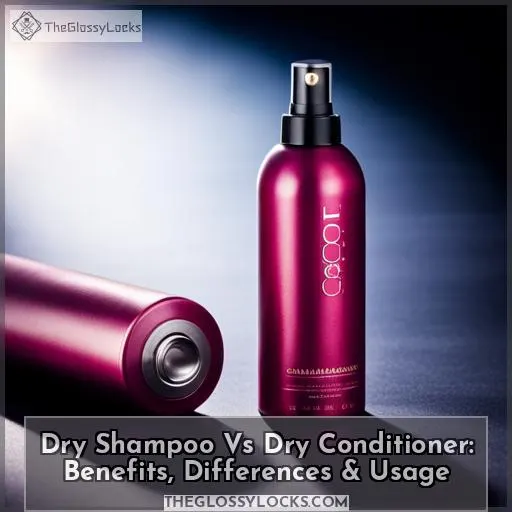
To help break down the difference between these two waterless solutions, we’ll take an in-depth look at what dry conditioner is, how it works, and when to use it. We’ll also explore the main differences between dry shampoo and dry conditioners so that you can determine which one will give you optimal results.
Table Of Contents
- Key Takeaways
- What is Dry Conditioner?
- How Does Dry Conditioner Work?
- How to Use Dry Conditioner
- When to Use Dry Conditioner
- Benefits of Using Dry Conditioner
- Main Differences Between Dry Shampoo and Dry Conditioner
- Can You Use Dry Shampoo and Dry Conditioner at the Same Time?
- Is Dry Conditioner Bad for Your Hair?
- Does Dry Conditioner Help With Greasy Hair?
- Conclusion
Key Takeaways
- Dry conditioner hydrates and combats frizz.
- Dry conditioner is ideal for fine or medium-textured hair, similar to what’s seen with the right beard moisturizing oils
.
- Dry conditioner reduces static electricity and adds shine.
- Combining dry shampoo and conditioner is beneficial.
What is Dry Conditioner?
You can keep your hair looking healthy and hydrated with dry conditioner, a spray-in product that’s often used in conjunction with nourishing ingredients like coconut milk and aloe vera to help combat frizz while adding oils and conditioning ingredients. It’s important to shake the can before use for even distribution of these beneficial ingredients.
Hold the can 6-8 inches away from your hair, focusing on mid-lengths to ends in order to avoid overloading roots or scalp.
This product is especially helpful when you’re experiencing dryness, static electricity flyaways, or tangles thanks to its moisturizing abilities that won’t weigh down fine or medium-textured hair types nor leave behind any greasiness like traditional wet conditioners might do!
Dry conditioner also complements dry shampoo, which further extends hairstyle life, thus streamlining one’s entire haircare routine without compromising the nourishment levels of their locks!
How Does Dry Conditioner Work?
As you spritz your hair with dry conditioner, the oils and conditioning ingredients help to hydrate and combat frizz, creating a lustrous sheen that envelops your tresses like a silky curtain. Dry conditioner benefits include reduced frizz instantly and softened dry hair without greasiness.
It also helps maintain fresh blowouts for longer times and saves time when used with dry shampoo.
Dry conditioners contain moisture-rich ingredients such as plant extracts or essential oils. They can be applied from mid shaft down to ends on most types of hair texture, including curly ones.
The main differences between using dry conditioner in combination with dry shampoos are their effects. While dry shampoo reduces oiliness and adds volume, dry conditioner strengthens strands by moisturizing them through nourishing agents present in its formula.
Dry conditioner also helps to detangle hairs while reducing static buildup. Additionally, it adds softness and shine to the hair.
How to Use Dry Conditioner
To get the most out of your style, shake up a can of dry conditioner and spritz it onto your mid-lengths to ends for an instant boost! Dry conditioner is essential for keeping hair hydrated between washes.
Keep in mind that using too much product can cause buildup over time – so only use when necessary! For best results, hold the can 6-8 inches away from hair. Focus on mid-lengths and ends. Muss gently after application. Avoid the root/scalp area.
Combining dry shampoo with a conditioning spray is also beneficial. Use shampoo at roots and conditioner at tips.
All types of hair will benefit from this simple routine!
When to Use Dry Conditioner
When your hair feels dry, static-y, or frizzy, using a dry conditioner is an effective way to instantly reduce the appearance of these issues. In fact, 70% of users report improved manageability after using a dry conditioner.
Dry conditioners are typically used as leave-in products on damp or towel-dried hair. They should be applied from mid-shaft down to the ends. Depending on individual needs and personal preferences for haircare routine frequency, it can be beneficial to use either product every few days or as needed when you notice that your locks need added hydration.
For those with fine/medium textures who want more body but don’t require additional moisture, try using a combination of both products. Start with dry shampoo at the roots, followed by a light application of conditioning spray throughout the mid-lengths and towards the ends if desired.
Those with thicker strands may opt for just one product while needing more frequent applications than their finer counterparts. This is due to increased oiliness around the scalp area, which requires extra attention! Dry shampoos absorb oils, whereas conditioners add softness without greasiness.
So choose what best suits your individual needs based on the results achieved from experimenting over time.
Benefits of Using Dry Conditioner
Dry conditioner is an effective way to hydrate and reduce frizz in your hair. Not only does it complement dry shampoo, but its conditioning ingredients also soften and detangle hair fibers for improved manageability.
Hydrates and reduces frizz
By using a dry conditioner, you can instantly hydrate and reduce frizz in your hair for softer locks with more shine. Dry conditioners go beyond the benefits of dry shampoo by providing moisture and conditioning ingredients instead of powders.
Shake up the can before use, then hold it 6-8 inches away from your hair, focusing on the mid-lengths to ends. Gently muss your hair afterwards to evenly spread the product over all types of fine or medium hair.
Dry conditioner complements traditional dry shampoos by extending the life of your hairstyle without causing product buildup when used correctly.
Dry conditioner is essential for maintaining healthy-looking tresses between washes. It replaces lost oils, softens strands, and minimizes static buildup without making your hair greasy or heavy.
Complements dry shampoo
Using dry conditioner in tandem with a dry shampoo will help you extend the life of your hairstyle and keep it looking fresh for longer. This combination can reduce frizz, detangle hair, add softness and shine without greasiness or product buildup.
It also offers time-saving benefits by allowing you to refresh your look quickly on non-wash days.
Dry conditioner is an essential tool to have in any haircare routine; it complements dry shampoo perfectly! A few tips when using this duo include:
- Shake the can before use for even ingredient distribution.
- Hold 6 to 8 inches away from hair while avoiding the root/scalp area.
- Focus on mid-lengths & ends rather than roots.
- Gently muss after application for even spread throughout strands.
Softens and detangles hair
Try using a dry conditioner to instantly soften and detangle your hair with its nourishing ingredients! It’s an ideal choice for those who want to reduce frizz, static buildup, or tangles without the greasiness of a regular leave-in product.
Dry conditioners contain naturally derived oils that help moisturize and hydrate hair, while also providing lightweight protection from heat styling tools. To get the most out of it, apply it on mid-shafts down to ends when dampening your hair before blow-drying or air-drying.
For added benefits, pair it with a dry shampoo that absorbs oiliness at roots so you can extend styles longer between washes! With these combined techniques, you’ll have softness and shine all day long.
Main Differences Between Dry Shampoo and Dry Conditioner
When it comes to dry shampoo alternatives, there are two main options: dry conditioner and leave-in conditioner. While both provide hydration for dry hair, the main difference between them is that a leave-in conditioner adds moisture without needing to be rinsed out, while a dry conditioner does not require water and dries on contact.
Dry conditioners are ideal for frizz control and styling since they add moisture quickly without leaving your hair wet or greasy. They can also help extend the life of blowouts when used in combination with other products like heat protectants or oil serums.
In terms of benefits, compared to regular shampoos which may strip away natural oils from the scalp as well as essential nutrients from strands, dry conditioning helps keep this balance intact by adding only what’s needed – thus resulting in healthier-looking locks over time!
It’s important to note that neither product should replace traditional shampooing/conditioning but rather serve as complementary methods for better overall results.
Can You Use Dry Shampoo and Dry Conditioner at the Same Time?
Yes, you can use dry shampoo and dry conditioner together to get the best of both worlds – softness and volume! Combining these two products allows for maximizing results by adding hydration while absorbing oiliness.
It also helps protect against heat damage that comes from styling tools like hairdryers or straighteners. However, it is important to note that not all product combinations are compatible with each other; therefore, it’s important to check labels for any warnings about mixing them together before using them at the same time in order to avoid damaging your hair or scalp health further.
By using both products correctly, you will be able to enjoy the benefits of combining their effects while avoiding potential risks associated with misuse, such as build-up on your strands, which could lead to unwanted texture changes over time if done incorrectly.
Is Dry Conditioner Bad for Your Hair?
Even if it hydrates and softens your hair, excessive use of dry conditioner can still lead to product buildup.
- Dry Conditioner Effects: It replenishes moisture and reduces frizz but can build up over time.
- Hair Hydration: It restores hydration without making hair greasy or weighed down.
- Frizz Control: It helps manage flyaways while adding shine and smoothness.
- Dry Conditioner Myths & Tips: Using it sparingly (2–3 times a week) is best for avoiding product buildup.
When used properly, it’s an effective way to keep tresses looking healthy between washes — providing needed nourishment that regular shampooing does not offer alone! Dry conditioners provide an effortless yet sophisticated solution for busy days when styling isn’t possible due to lack of time or depleted energy levels from other activities throughout the day.
They can reduce static electricity in fine or medium hair textures as well as all types of curls, waves, and coils.
Does Dry Conditioner Help With Greasy Hair?
You can use dry conditioner to help combat greasy hair and revive it with a soft, healthy sheen. Dry conditioner is different from dry shampoo because it contains oils and conditioning ingredients that add moisture without making the scalp oily or creating buildup.
It’s beneficial for all hair types but particularly helpful for fine or medium-textured locks that tend to get greasy quickly.
To use, shake the can of product before application and hold 6–8 inches away from your head while focusing on mid-lengths down to ends of your strands—avoiding the scalp area at all costs! Once applied, lightly muss up hair with fingers so everything is evenly spread out.
This will help prevent any sticky residue being left behind in one spot, which could potentially lead to an oilier appearance later down the line if not taken care of properly.
Dry conditioners are great when you’re looking for a quick fix between washes as they absorb some oiliness without weighing down tresses like traditional leave-in products might do sometimes. Since those usually contain heavier ingredients such as silicones, dry conditioners provide much-needed hydration along with detangling capabilities.
Conclusion
You’ve likely heard of dry shampoo, but what about dry conditioner? Dry conditioner is a lightweight spray-in product designed to hydrate hair and combat frizz.
It can be used to soften dry hair without greasiness, maintain a fresh blowout, reduce frizz and static, and extend hairstyle life. The main difference between dry shampoo and dry conditioner is that the former reduces oiliness and adds volume, whereas the latter softens hair and reduces frizz.
While excessive use can lead to product buildup, dry shampoo can be used in moderation, as overuse can cause dryness and breakage, especially if used with heat styling tools, check out dry shampoo use. Dry shampoo and conditioner can be used together for maximum benefits. With the right product, dry conditioner may be the key to beautiful, healthy hair.

